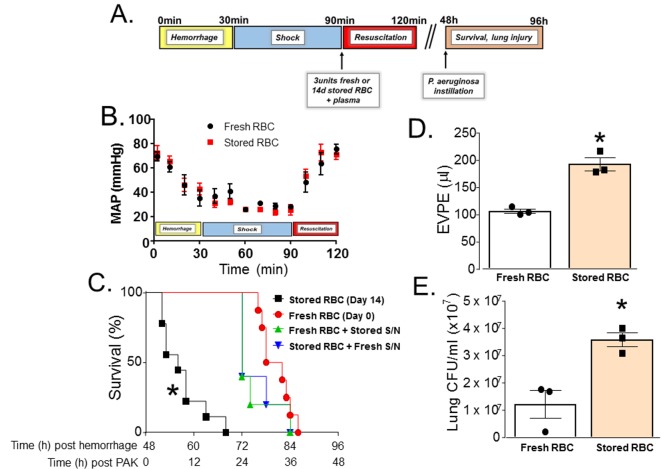Fig 1. Trauma hemorrhage (TH) and resuscitation with stored blood increases mortality, pulmonary edema, and bacterial colony-forming units (CFUs) induced by subsequent P. aeruginosa pneumonia.
(A) Scheme of experimental protocol used. (B) Mean arterial pressure (MAP) readings during hemorrhage, shock, and resuscitation with 3 units of fresh (day 0, n = 8) or stored (14 d, n = 8) red blood cells (RBCs). Data shown are mean ± SEM. (C) C57BL/6 wild-type mice underwent TH and were randomly resuscitated with either fresh (0 storage days, circles, n = 12) or stored (14 storage days, squares, n = 9) RBCs with plasma (1:1). Forty-eight hours later, these mice were instilled with P. aeruginosa K-strain (PAK), and survival monitored. *p < 0.001 compared to fresh RBC resuscitation by log-rank test. Also shown are effects of PAK after mice were transfused with fresh packed RBCs mixed with stored supernatants (S/N, triangles, n = 5, p < 0.001) or stored packed RBCs mixed with fresh supernatants (inverted triangles, n = 5, p < 0.001); p-values indicate comparison to stored RBC resuscitation group by log-rank test. (D) Mice underwent TH and resuscitation with either fresh (n = 3) or stored (n = 3) RBCs and 6 h after PAK lung instillation were sacrificed and extravascular pulmonary equivalents (EVPE) measured. Data are mean ± SEM; each data point represents a separate animal. *p = 0.003 by unpaired t test. (E) Mice underwent TH and resuscitation with either fresh (n = 3) or stored (n = 3) RBCs and 6 h after PAK instillation were sacrificed and lung CFU/ml was measured according to protocol. Data are mean ± SEM; each data point represents a separate animal. *p = 0.014 by unpaired t test.

